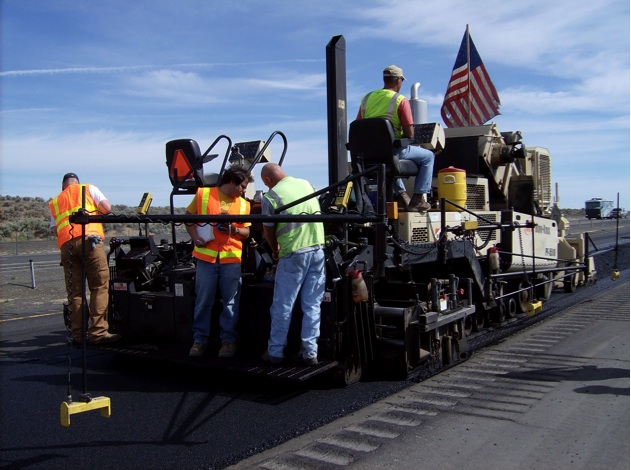Warm Mix Asphalt, despite its name, has been a hot topic in the road building industry lately. In this edition of the RoadReady newsletter, we will take a look at warm mix asphalt, touch on the differences between warm mix and hot mix and explore some of the benefits and risks associated with using warm mix asphalt for your next project.


How warm mix differs from hot mix asphalt
Warm mix asphalt (WMA) can be thought of as Hot Mix Asphalt’s cooler relative…not ‘cooler’ in that Fonzie sort of way, but based on the temperature required to produce it. Warm mix asphalt is produced in the 212 to 275 degrees Fahrenheit range, while hot mix is made between 275 to 350 degrees Fahrenheit. This is made possible by a change in production process, either using a foaming technique, or including an additive, both of which provide the desired effect of reducing the production temperature of the mix.

As mentioned, there are two main methods to produce warm mix asphalt. One method involves foaming, which works by adding a small amount of water to the asphalt mix. Water expands dramatically in volume when it turns to steam, which expands the binder through foaming and reduces the mix viscosity. Foaming can be achieved by different methods, the most widely adopted involves injecting water through a pump or nozzle.
The second main method to produce warm mix is through additives. These can be either organic or chemical. Organic additives are typically a type of wax that is added to the asphalt binder which reduces the asphalt binder viscosity. Chemical additives tend to be surfactants, which improve the adhesion between the binder and aggregate. Some additives are added to the mix as an emulsion in water, and will also have a foaming effect upon the asphalt binder.
Benefits and risks of using WMA
There are several benefits and some risks to using warm mix versus hot mix asphalt that are worth mentioning.
Several benefits result from using warm mix asphalt. First, there is the overall reduced fuel consumption in the asphalt plant. This results in energy savings and an overall reduced cost as compared to typical hot mix, where the energy used is a significant portion of the cost of production. Warm mix asphalt uses less diesel fuel, which is a significant cost savings to the project.Besides cost, reduced mix temperature leads directly to a second major benefit: reduced emissions including both emissions at the plant, as well as fugitive emissions and odor. The use of warm mix in these situations may help in trying to meet air quality standards.
Another bonus is that warm mix cools more slowly than hot mix, since there is a smaller difference between the mix temperature and the surrounding air. This means that the mix will remain workable longer than hot mix, despite cooler conditions or longer delays. Trucks can also haul warm mix further for the same reason.
Finally, the lower temperature means that warm mix will have a reduced viscosity during construction – it will not resist the flow as much as hot mix, which means that better compaction is achievable at a lower compaction temperature. Another way to state this is that warm mix has a lower cessation temperature than hot mix.
Warm mix is a relatively new applied technology here in the U.S., so the very long-term performance data of U.S. projects is limited. However, adoption is growing quickly, and in-turn, so is the long-term performance data.
Looking at production, there are challenges: adjusting burners to a steady rate and asphalt not flowing readily. These problems can be remedied with the use of best practices such as proper plant maintenance, keeping operation at normal production rates, and increasing the temperature slightly if needed.
One important thing to keep in mind is that the same quality construction best-practices that should be followed when building hot mix pavements need also to be followed when constructing warm mix pavements.
Bright future for warm mix
Warm mix is catching on like wildfire here in the U.S. and it is exhibiting very promising benefits both environmentally and economically. We can expect to see continued growth and adoption in the future for warm mix technology in projects across the U.S.


i looked you up as i work in recycled road plannings trying to find out more about solid emulsifiers as we use the liquid it gets every were and clouts easily can you advise me on ways to load it cleanly thanks